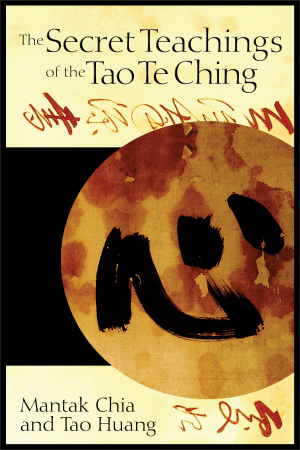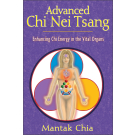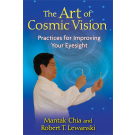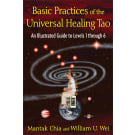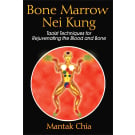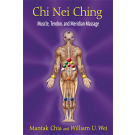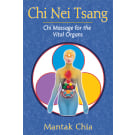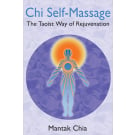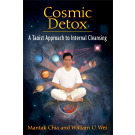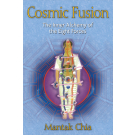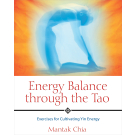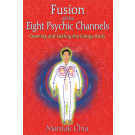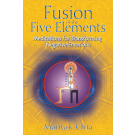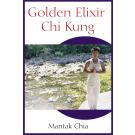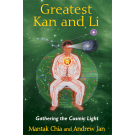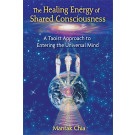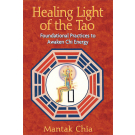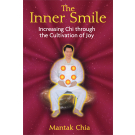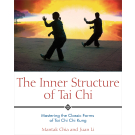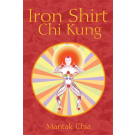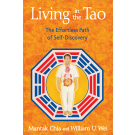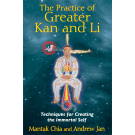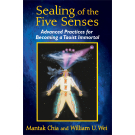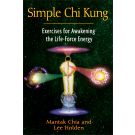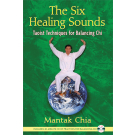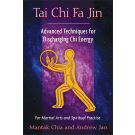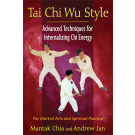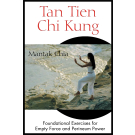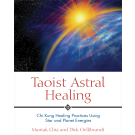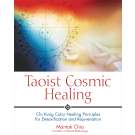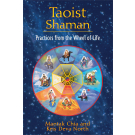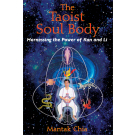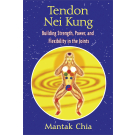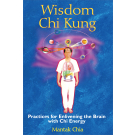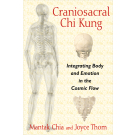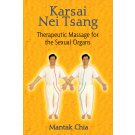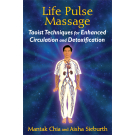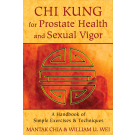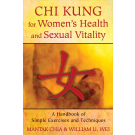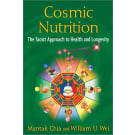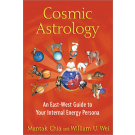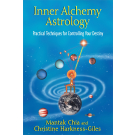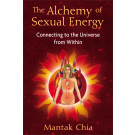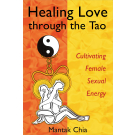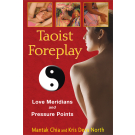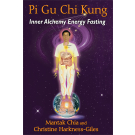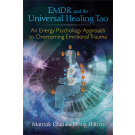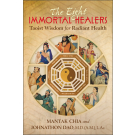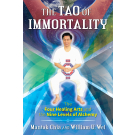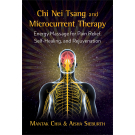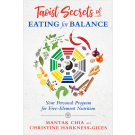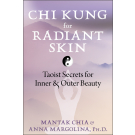The Secret Teachings of the Tao Te Ching
By (Author) Mantak Chia
By (Author) Tao Huang
Availability:
In Stock
- Pages: 256
- Book Size: 6 x 9
- ISBN-13: 9780892811915
- Imprint: Destiny Books
- On Sale Date: January 31, 2005
- Format: Paperback Book
- Illustrations: 85 b&w illustrations
For over 2,500 years the words of the Tao Te Ching, the primary scripture of Laoism and Taoism, have been regarded as among the greatest treasures of the world. Taoist masters Mantak Chia and Tao Huang analyze Lao-tzu's teachings line by line, and offer practical illustrations that clarify the true meaning and purpose of this classic text.
Reveals techniques for achieving spiritual immortality through an in-depth exploration of Lao-tzu's Tao Te Ching
• Includes practices and meditations for living in harmony with the Tao (universal essence) and Te (kind action)
• Reveals the integration of heavenly and human power in the mystic field within us
• Presents Tao Huang's English translation of the Tao Te Ching from the original Chinese Mawangdui text unearthed in 1973
For over 2,500 years the words of the Tao Te Ching, the primary scripture of Laoism and Taoism, have been regarded as among the greatest treasures of the world. Lao-tzu, whose name means “the ancient child,” wrote these brief but essential verses that have both confounded and conferred blessings on humankind. Now Taoist masters Mantak Chia and Tao Huang guide readers through the origins of this philosophy, the meaning behind its 5,000 pictographs, and the way of living that generations have followed.
While the text of the Tao Te Ching has been passed down in literary form for generations, the essence of the text can be understood only through heart awakening--a true integration of body and mind--made possible with the insights and exercises in this book. The authors analyze Lao-tzu's teachings, line by line, and offer meditations, interpretations, and practical illustrations that clarify the true meaning and purpose of this classic text.
• Includes practices and meditations for living in harmony with the Tao (universal essence) and Te (kind action)
• Reveals the integration of heavenly and human power in the mystic field within us
• Presents Tao Huang's English translation of the Tao Te Ching from the original Chinese Mawangdui text unearthed in 1973
For over 2,500 years the words of the Tao Te Ching, the primary scripture of Laoism and Taoism, have been regarded as among the greatest treasures of the world. Lao-tzu, whose name means “the ancient child,” wrote these brief but essential verses that have both confounded and conferred blessings on humankind. Now Taoist masters Mantak Chia and Tao Huang guide readers through the origins of this philosophy, the meaning behind its 5,000 pictographs, and the way of living that generations have followed.
While the text of the Tao Te Ching has been passed down in literary form for generations, the essence of the text can be understood only through heart awakening--a true integration of body and mind--made possible with the insights and exercises in this book. The authors analyze Lao-tzu's teachings, line by line, and offer meditations, interpretations, and practical illustrations that clarify the true meaning and purpose of this classic text.
Chapter 1--Wordless Uttering of the Tao
The Tao that is voiced is no longer that of eternal Tao.
The name that has been written is no longer that of eternal name.
The nameless is the beginning of the cosmic universe.
The named is the mother of the myriad creatures.
Being at peace, one can see into the subtle.
Engaging with passion, one can see into the manifest.
They both arise from a common source but have different names.
Both are called the mystery within the mystery.
They are the door to all wonders.
Defining the Tao
The word Tao (pronounced "dow") is used with increasing frequency in English language and literature. Tao represents something that is profoundly subtle and impossible to grasp with the conceptual mind. For Lao Tzu, the Tao is a mysterious, numinous unity underlying and sustaining all things. It is inaccessible to normal thought, language, or perception.
Understanding its meaning is paramount to viewing the magnificence of the cosmos, tapping into the mystery of the universe, and the origin of nature. It encompasses the vast, outer reaches of the universe; it is invisible, unfathomable, and unreachable; mystical beyond comprehension; forever silent, unmoved, and sublimely peaceful. Before the reality of the Tao, the voice can no longer utter sound, the eyes can no longer express their curiosity, and movement is halted. Philosophy cannot define it. Science cannot calculate it.
To define the Tao is to listen to silence, observe nakedness, and activate stillness. It is to communicate with your inner voice, awaken your innate talent, find a home with eternal beauty, and release your full potential.
To define the Tao is to stand on the highest mountain peak, swim in an ocean of love, and soar with the dove in the valley of death. To sense the Tao is to stand in a cool spring shower; to view the Tao is to observe from a high tower; to smell the Tao is to breathe in a fragrant flower.
Communicable Tao and Incommunicable Tao
Communicable Tao
The Tao is expressed through our power of communication, from the primary power of the voice: the manifestation of inner consciousness and our spiritual trumpet. Verbalization is the gateway to the Tao through the breath of life and vibration of sound. At the time that oral communication no longer served our human needs and expectations, letters and numbers were employed symbolically.
The voice is a powerful force that can reach from one person (dead or alive) to the multitudes, permitting the self to be expressed, to touch hearts, to justify morality, and verify deeds accomplished. Our inner justice is a direct spiritual communication that goes beyond ego-anticipation and social culture; it is an actualization process of human willpower.
Lao Tzu states, The Tao that is voiced is no longer that of eternal Tao. The name that has been written is no longer that of eternal name. The Tao that is voiced is, in essence, the communicable Tao of inner self that connects deeply to both our microbiological and psychological self as well as our macrocosmic and celestial self.
Inner Voice
Without the inner voice, our most sacred spiritual vessel, God is not alive, the Tao is not present, and the self is not active. It characterizes the beauty, meaning, and strength of life. It can be silent or immeasurably powerful. We often turn a deaf ear to this inner voice and rely on the external world, on external authority and discipline, to define our life as something meaningful, leaving us with confusion and distortion of our life’s true meaning.
In order to establish a clear relationship with the sacred vessel of our inner voice, the first set of meditation practices in this book begins with finding, restoring, and listening to our inner voice in any given circumstance or crisis.
To develop your attunement to your inner voice:
1--Sit upright with your spine straight. Be simultaneously relaxed and alert. Place one hand on top of the other, and place both hands over your heart.
2--Listen intently to the sound of silence. You will begin to recognize a combination of spiritual voice and personal voice.
3--Pay attention to the most immediate direction and clear message. This is the manifestation of your inner voice.
4--Verbalize it inwardly, whether or not it makes sense to you.
5--Name it with no preconceived notion.
6--Meditate upon it as a part of the visualized journey of your life before it actually takes place.
7--Connect your own name with it. See how it conforms to you and your personality.
8--Make it work for you. It is the divine plan and your decision must be made now.
Secret Teachings of the Tao Te Ching
Acknowledgments
Putting the Teachings into Practice
Introduction: Conveying the Heart of Lao Tzu’s Teaching
Lao Tzu and the Tao Te Ching
Essence Illuminated
A Fresh Translation
Cosmic Bridge
An Extraordinary Collaboration
Note to Women Readers
1 -- Wordless Uttering of the Tao
Defining the Tao
Communicable Tao and Incommunicable Tao
The Nature of the Tao
2 -- Chi and Taoist Inner Alchemy
The Three Minds
Returning to the Source
The Flow of the Tao: Empty and Full
3 -- Sensation, the Brain, and Taoist Practice
The Brain: Perception, Emotion, and Response
Five Colors Blind the Eyes
Beyond Ego Conflict
4 -- Walking the Way: Energy Transformation
The Wisdom of the I Ching
Practices for Energy Alchemy
5 -- Embracing Oneness
Harmonizing Hun and Po, Heaven and Earth
Triple Unity
Reflections on Unification
6 -- The Wisdom of the Taoist Sage
What Is a Sage?
Wu Wei: The Action of the Sage
The Character of the Sage
The Path of the Sage
7 -- The Nature of Te
Virtuous Action
Kind Action
Te Cultivation
8 -- Governing Self and Nation
Living Simply
The Sage and the People
The Role of Government
Conflict
9 -- Longevity and Immortality
The Psychology of Immortality
Change and Changelessness
Taoist Sexual Practices for Longevity and Immortality
Harmony Is Eternal
10 -- Trust and Faith
Speaking the Tao
The Way of Trustworthiness
The Treasure of the Tao
Lao Tzu’s Tao Te Ching
Bibliography
The Universal Tao System and Training Center
Index
Index of Tao Te Ching Chapters
Acknowledgments
Putting the Teachings into Practice
Introduction: Conveying the Heart of Lao Tzu’s Teaching
Lao Tzu and the Tao Te Ching
Essence Illuminated
A Fresh Translation
Cosmic Bridge
An Extraordinary Collaboration
Note to Women Readers
1 -- Wordless Uttering of the Tao
Defining the Tao
Communicable Tao and Incommunicable Tao
The Nature of the Tao
2 -- Chi and Taoist Inner Alchemy
The Three Minds
Returning to the Source
The Flow of the Tao: Empty and Full
3 -- Sensation, the Brain, and Taoist Practice
The Brain: Perception, Emotion, and Response
Five Colors Blind the Eyes
Beyond Ego Conflict
4 -- Walking the Way: Energy Transformation
The Wisdom of the I Ching
Practices for Energy Alchemy
5 -- Embracing Oneness
Harmonizing Hun and Po, Heaven and Earth
Triple Unity
Reflections on Unification
6 -- The Wisdom of the Taoist Sage
What Is a Sage?
Wu Wei: The Action of the Sage
The Character of the Sage
The Path of the Sage
7 -- The Nature of Te
Virtuous Action
Kind Action
Te Cultivation
8 -- Governing Self and Nation
Living Simply
The Sage and the People
The Role of Government
Conflict
9 -- Longevity and Immortality
The Psychology of Immortality
Change and Changelessness
Taoist Sexual Practices for Longevity and Immortality
Harmony Is Eternal
10 -- Trust and Faith
Speaking the Tao
The Way of Trustworthiness
The Treasure of the Tao
Lao Tzu’s Tao Te Ching
Bibliography
The Universal Tao System and Training Center
Index
Index of Tao Te Ching Chapters
A student of several Taoist masters, Mantak Chia founded the Healing Tao System in North America in 1979 and developed it worldwide as European Tao Yoga and Universal Healing Tao. He has taught and certified tens of thousands of students and instructors from all over the world and tours the United States annually, giving workshops and lectures. He is the director of the Tao Garden Health Spa and Resort training center in northern Thailand and the author of 25 books, including the bestselling The Multi-Orgasmic Man. Tao Huang was born in Dingxi in Northwest China. In 1990 he came to the United States to present the teachings of Laoism and the practices of Taoism. He is the author of Laoism: The Complete Teachings of Lao Zi.
"It would be hard to find a better qualified interpreter of this classic than Mantak Chia. He deserves to be recognised as one the great figures in 20th and 21st century communication across health, spiritual and cultural boundaries."
Reg Little, New Dawn, Mar/Apr 2007
Reg Little, New Dawn, Mar/Apr 2007
TAOISM / EASTERN PHILOSOPHY
For over 2,500 years the words of the Tao Te Ching, the primary scripture of Laoism and Taoism, have been regarded as among the greatest treasures of the world. Lao Tzu, whose name means “the ancient child,” wrote these essential verses that have both confounded and conferred blessings on humankind. Now Taoist masters Mantak Chia and Tao Huang guide readers through the origins of this philosophy, the meaning behind its 5,000 pictographs, and the way of living that generations have followed.
While the text of the Tao Te Ching has been passed down in literary form for generations, the essence of the text can be understood only through heart awakening--a true integration of body and mind--made possible with the insights and exercises in this book. The authors analyze Lao Tzu’s teachings, line by line, and offer meditations, interpretations, and energy cultivation practices that illuminate the true meaning of this classic text.
A student of several Taoist masters, MANTAK CHIA founded the Healing Tao System in North America in 1979 and developed it worldwide as European Tao Yoga and Universal Healing Tao. He has taught and certified tens of thousands of students and instructors from all over the world and tours the United States annually, giving workshops and lectures. He is the director of the Tao Garden Health Spa and Resort training center in northern Thailand and the author of twenty-five books, including the bestselling The Multi-Orgasmic Man. TAO HUANG was born in Dingxi in Northwest China. In 1990 he came to the United States to present the teachings of Laoism and the practices of Taoism. He is the author of Laoism: The Complete Teachings of Lao Zi.
For over 2,500 years the words of the Tao Te Ching, the primary scripture of Laoism and Taoism, have been regarded as among the greatest treasures of the world. Lao Tzu, whose name means “the ancient child,” wrote these essential verses that have both confounded and conferred blessings on humankind. Now Taoist masters Mantak Chia and Tao Huang guide readers through the origins of this philosophy, the meaning behind its 5,000 pictographs, and the way of living that generations have followed.
While the text of the Tao Te Ching has been passed down in literary form for generations, the essence of the text can be understood only through heart awakening--a true integration of body and mind--made possible with the insights and exercises in this book. The authors analyze Lao Tzu’s teachings, line by line, and offer meditations, interpretations, and energy cultivation practices that illuminate the true meaning of this classic text.
A student of several Taoist masters, MANTAK CHIA founded the Healing Tao System in North America in 1979 and developed it worldwide as European Tao Yoga and Universal Healing Tao. He has taught and certified tens of thousands of students and instructors from all over the world and tours the United States annually, giving workshops and lectures. He is the director of the Tao Garden Health Spa and Resort training center in northern Thailand and the author of twenty-five books, including the bestselling The Multi-Orgasmic Man. TAO HUANG was born in Dingxi in Northwest China. In 1990 he came to the United States to present the teachings of Laoism and the practices of Taoism. He is the author of Laoism: The Complete Teachings of Lao Zi.



